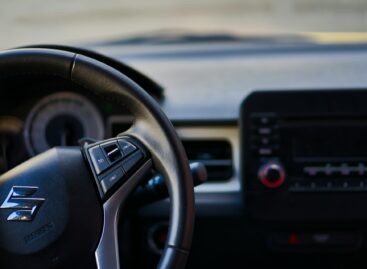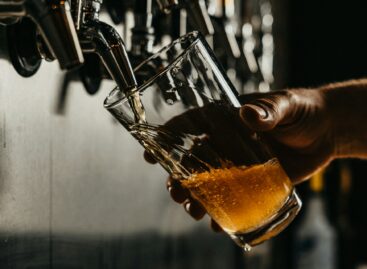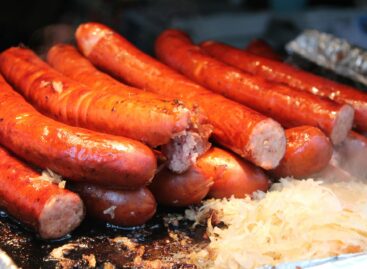Design surrounds consumers
This year’s last Trade Marketing Club (TMK) meeting was held online on 12 November. Its title was Design = Shopper Loyalty and the programme also included the award ceremony of the 11th Hungarian POPAI Awards POP competition.
Colour, shape, atmosphere

Bálint Török
head of division
Wanzl
There were nearly 70 participants of the online meeting. One of the club’s founders Zsuzsanna Hermann welcomed them and POPAI president Ágnes Csiby introduced the speakers. The first one was Bálint Török, Wanzl’s head of division, who introduced the latest super- and hypermarket design trends. One of the dominant international styles is the ‘clean-cut’ trend that is characterised by mild colours and modest material use, plus few communication surfaces. Other trends include the Scandinavian, the industrial and the eclectic styles.
Next Mr Török spoke about the design development history of Hungarian grocery stores, with the focus being on the period after 2015. Finally the speaker analysed the changes that occurred due to the COVID-19 pandemic: new tools showed up in stores, most of which are functional and aren’t integrated into the store image yet. Once they are, the old store atmosphere and harmony will return.
Design speaks to consumers

Gábor Csicsai
senior designer and interior architect
Mangrove
Gábor Csicsai, Mangrove Kft.’s senior designer and interior architect said good design in a shop or in an in-store product works like good packaging. It gives the first impression, pays attention to customers and says something about the retailer. These days shoppers want the good old things back, due to the uncertainty caused by the pandemic. In design plans there is greater emphasis on informing shoppers, on LED technology and on passive or moving visual effects.
There is also bigger demand than before for large, clean and tidy spaces that communicate safety. Currently eco-friendliness is less important, shoppers accept more packaging, but sustainability will return after the crisis situation is over. Digitalisation, cleanliness and contactless shopping will also be in the centre of attention in the future.
Generating sales and impulse zones

László Banu
managing director
Artconcept Design
László Banu, managing director of Artconcept Design Kft. has been designing retail and HoReCa interiors since the 1990s. He thinks that already in the designing or redesigning phase it must be emphasised where the sales increasing opportunities lie. Retail spaces shouldn’t only look good, they must also be impulsive. Mr Banu used before-after photos to illustrate the work done by his team, creating atmospheric, progressive and ergonomic shops or cafés, which usually generate bigger sales increase than the operators hoped.
A wide range of services also come with the team’s retail space design work, such as interior design, construction work, image integration, general and green decoration with plants, leasing office furniture and kitchen technology equipment, etc.
The club meeting ended with award ceremony of the 11th POPAI Awards POP competition, about which you can read in the POPAI news section of our magazine. //
Related news
Suzuki Motor Corporation changes its logo after 22 years
🎧 Hallgasd a cikket: Lejátszás Szünet Folytatás Leállítás Nyelv: Auto…
Read more >A turnaround in promotions – brands are returning, but only with a discount?
🎧 Hallgasd a cikket: Lejátszás Szünet Folytatás Leállítás Nyelv: Auto…
Read more >A recuperating market in a changing consumer landscape
🎧 Hallgasd a cikket: Lejátszás Szünet Folytatás Leállítás Nyelv: Auto…
Read more >Related news
The New Year’s Eve fireworks fair is back: temporary sales will start in department store parking lots at the end of December
🎧 Hallgasd a cikket: Lejátszás Szünet Folytatás Leállítás Nyelv: Auto…
Read more >The first Eastern European non-alcoholic beer turns 50
🎧 Hallgasd a cikket: Lejátszás Szünet Folytatás Leállítás Nyelv: Auto…
Read more >Sausage: pork prices are already going down, but they won’t be cheaper in stores – a significant correction may come in the spring at the earliest
🎧 Hallgasd a cikket: Lejátszás Szünet Folytatás Leállítás Nyelv: Auto…
Read more >






